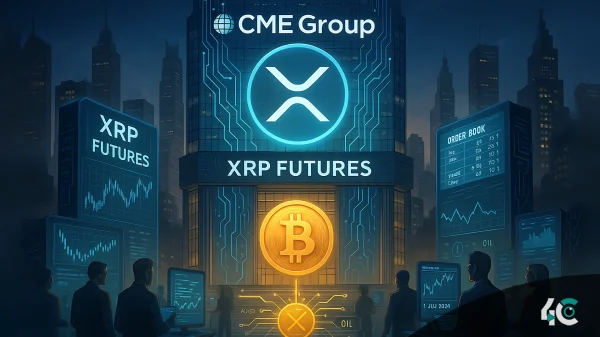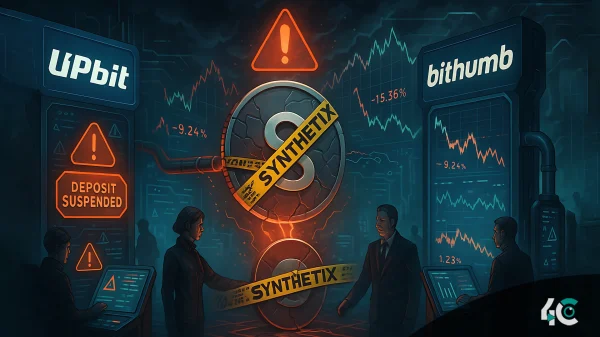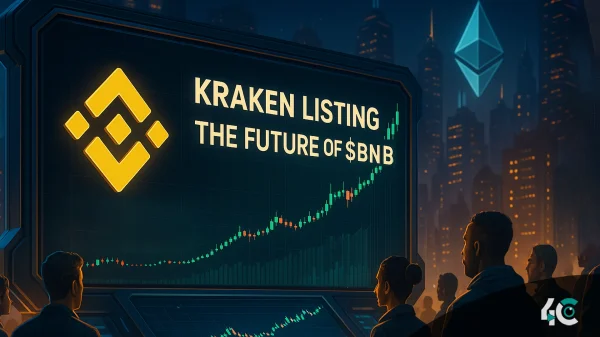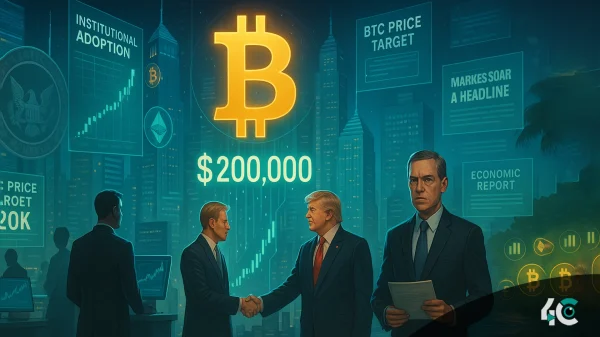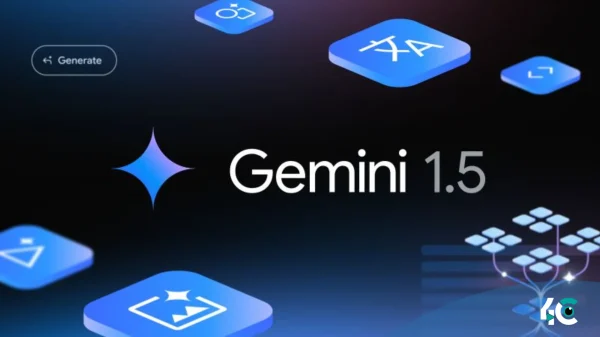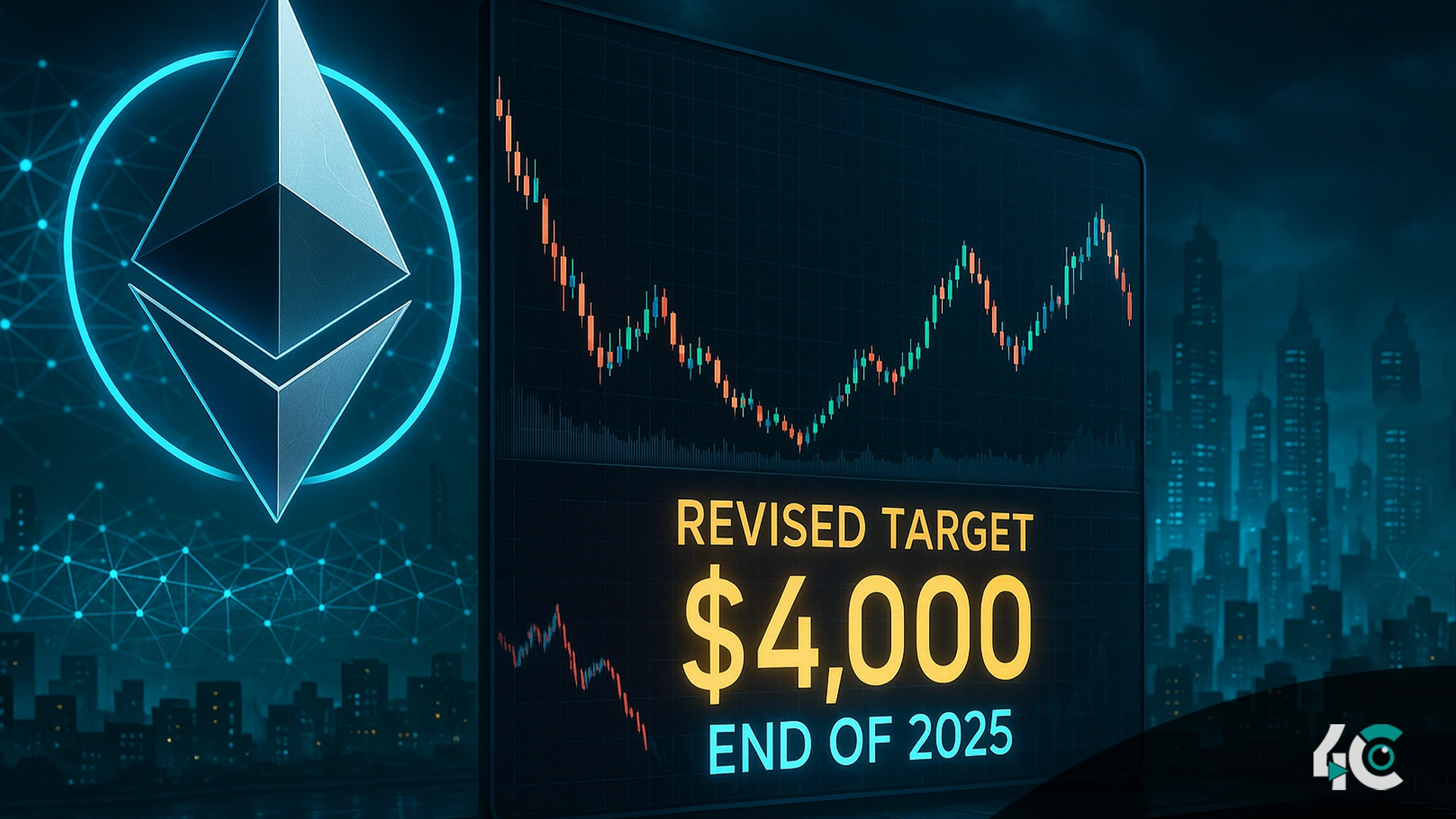Data from a recent analysis of Standard Chartered shows Ethereum’s (ETH) prices will reach $4,000 by the end of 2025. Interesting data! Ethereum’s new perspective emphasizes the complexity of the cryptocurrency, suggesting structural hurdles and prospects in both Ethereum and the wider crypto ecosystem. When it comes to lending and borrowing systems and smart contracts, Ethereum is still the main platform used. However, there has been a recalibration of expectations due to some structural weaknesses. The cryptocurrency faces competing Layer-1 regulatory scaling concerns.
The Revised Forecast: $4,000 by 2025
According to a revised forecast by Standard Chartered, Ethereum will achieve a price goal of $4,000 by 2025. The forecast is a mostly positive outlook. As stated by analysts, the underlying value of blockchain, as well as the successful transition to proof-of-stake (PoS), will drive the valuation of Ethereum.
Key Drivers of the Forecast
This article discusses the merger and energy efficiency.
In 2022, Ethereum underwent a successful shift to PoS due to The Merge. This shift reduced energy consumption, which attracted investors’ attention in the market. The transaction’s removal of tokens from circulation led to deflationary pressure.
Scalability Improvements
Layer-2 solutions, such as Arbitrum and Optimism, and sharding are scaling the Ethereum blockchain. Gas fees are being decreased drastically, and transaction speeds are increasing on Ethereum. To continue being competitive, these upgrades will be crucial to winning users and developers.
Dominance in DeFi and NFTs
Despite a heated competition, Ethereum still reigns on top of other crypto-traded DeFi or NFTs. The Total Value Locked (TVL) of Ethereum is billions. A forceful developer community is always being innovative and improving.
Structural Declines: Challenges Facing Ethereum
There are many intrinsic advantages of Ethereum, but the price of Ethereum may sustain a structural decline. Standard Chartered is cautiously optimistic despite struggles in the sector.
1. Intense Competition from Layer-1 Blockchains
The upcoming Layer-1 projects Solana, Avalanche and Polygon provide a swift and inexpensive alternative to Ethereum, which looks attractive and cheaper. Plus, modular blockchains like Celestia could dethrone Ethereum by allowing more flexibility.
2. Regulatory Uncertainty
Global regulators are cracking down on Ethereum as a smart contract platform. People worry that they will profitably get rVer coins into circulation.
3. Gas Fee Volatility
More specifically, high gas costs at peak network hours, even after advancing with Layer-2, continue to hold back retail users. Smaller applications and users are leaving for other competitors with lower transaction costs.
4. Centralization Risks in Staking
The staked ETH on Lido and Coinbase poses a threat to the decentralization of Ethereum’s economic infrastructure. This centralization may harm long-term trust and adoption.
Why $4,000? These are the underlying reasons for the adjustment.
Standard Chartered’s change of forecast acknowledges the hurdles Ethereum faces and the possibilities the crypto boasts of. Several factors justify the $4,000 target.
1. Growing Institutional Adoption
Ethereum’s PoS upgrade and deflationary tokenomics are leading to increased institutional interest, an analyst says. The fact that Grayscale and BlackRock are developing Ethereum products signals that they have faith in Ethereum and see it lasting a long time.
2. Deflationary Pressures
Ever since EIP-1559 went live, Ethereum has already burned millions of ETH. When staking rewards are combined with the supply of a large number of tokens, it gives rise to the price.
3. Real-World Applications
Ethereum is seeing a number of tokenized real-world assets (RWAs), which shows that it’s not only useful for DeFi and NFTs. Because of the programmability and interoperability of these apps, Ethereum is a base of ownership and finances.
4. Market Sentiment and Macro Trends
They feel that increasing inflation and falling dollar values will spur capital arbitrage in cryptocurrency investments. Ethereum is the second-largest in terms of market cap. So, it stands to benefit.
Final Thoughts: Is $4,000 Achievable?
Standard Chartered has said that Ethereum’s price will be around $4000 by the year 2025. Even if there are some structural problems on Ethereum, namely competition, regulatory risks, and scalability problems, the principles and institutional backing of Ethereum continue to innovate and provide a base for growth.
Ethereum’s trajectory teaches that investors should avoid getting caught up in volatility. Ethereum’s ability to defy ongoing structural declines and lead the blockchain space is key to reaching $4000.
Conclusion
Standard Chartered has updated its forecast, indicating the price of Ethereum could reach $4,000 by the end of 2025, citing as deflationary asset its popularity among institutions and real-life applications. However, dynamic declines, such as competition from Layer-1 blockchains, regulatory issues, and scaling issues, could potentially harm Ethereum’s value. Remember, whether Ethereum will make it to $10,000 will depend upon the validity of the above evaluation and considerations.




